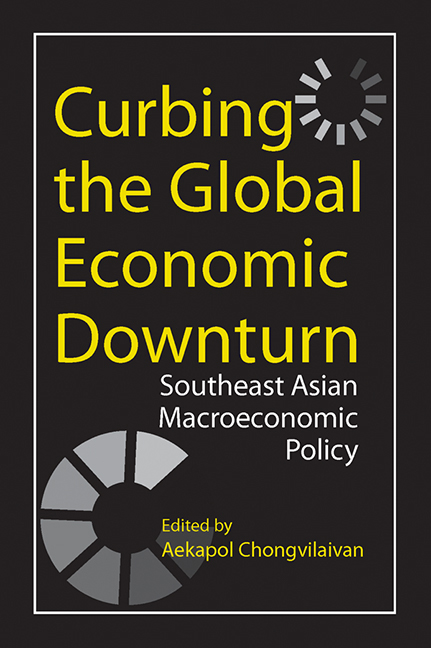Introduction
Published online by Cambridge University Press: 21 October 2015
Summary
The global economy has been in the grip of the worst economic downturn since World War II, painting a bleak picture of the global economic outlook around the world. The global economic slump in 2009 witnessed a contraction of the advanced economies by 2 per cent — 2.4 per cent for the United States (US), 1.8 per cent for the European Union (EU), and 5.8 per cent for Japan. While a turnaround in the economic prospects in 2010–11 is expected to be gradual and highly uncertain, the International Monetary Fund (IMF) cautioned that the timing and pace of the recovery hinge critically on strong policy actions to rebalance growth paths.
The impact of the global economic turmoil on the Southeast Asian community, however, is less clear-cut. The Asian Development Bank (ADB) revised downward the major Southeast Asian economies' growth to the worst post-1997 contraction in 2009 — at least 6 per cent for Singapore, 2.7 per cent for Thailand and 0.2 per cent for Malaysia. The rest of the region, in contrast, had yet to feel the ripple effects as the economic growth remained robust — 7 per cent for Vietnam, 4.8 per cent for Cambodia, 4.5 per cent for Indonesia and 3.7 per cent for the Philippines.
The Southeast Asian region as a whole is by no means recession-proof, nevertheless. Recent developments convey a series of caveats and worries about the resilience and sustainability of its economic conditions. The International Labour Organization (ILO), for instance, estimated a spike in unemployment rates across the region from 5.7 per cent in 2008 to 6.2 per cent in 2009. This means 7.2 million more jobless people due to the fallout from the global economic recession.
In fact, among the worst hit regions is Southeast Asia where the emerging economies have long thrived on export-led development and foreign direct investment (FDI). On the one hand, the trade link between Southeast Asia and major industrialized countries is substantial, with the US, the EU and Japan sharing more than 60 per cent of total demand for exports from the region.
- Type
- Chapter
- Information
- Curbing the Global Economic DownturnSoutheast Asian Macroeconomic Policy, pp. ix - xiiPublisher: ISEAS–Yusof Ishak InstitutePrint publication year: 2010



